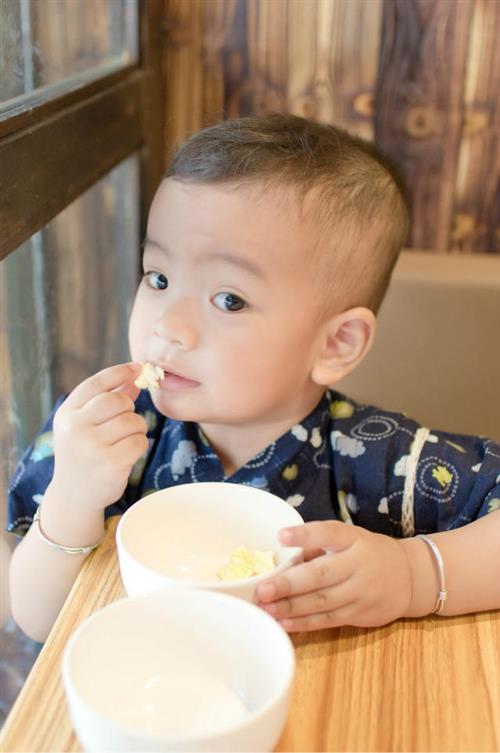As pink eye infections are very contagious, the patient population has spread from school to family and even children and babies are infected. If a child is sexually active, if he or she does not pay attention to prevention, a child may get sick quickly and spread throughout the whole family or kindergarten.
"Pink eye disease" is the popular name for acute bacterial or viral conjunctivitis in people who have infectious and epidemic eye redness, conjunctival hyperemia (or hemorrhage), and increased secretion. The common bacteria that cause this disease are influenza, Staphylococcus, and Streptococcus pneumoniae. Babies often have a cold or contact with the history of patients with "red eye". 1-3 days after the onset of acute, tearing, burning sensation, foreign body sensation; a large number of mucus or purulent secretions, often make children open in the morning without open eyes; eyelid swelling, conjunctiva (ie "white eye") congestion is obvious, there are The subconjunctival hemorrhage can occur, but generally does not affect vision. The virus that causes this disease is mainly adenovirus or Coxsackie virus, which is highly contagious and can cause regional or wider epidemics. In addition to the symptoms of acute bacterial conjunctivitis, children may have high fever and sore throat. Individual children may have fine-point turbidity on the cornea, and the preauricular lymph nodes may have swelling and tenderness. There are also very few concurrent lower limb paralysis.

The following are some common causes of conjunctivitis in children:
Virus: If your baby has both conjunctivitis and cold symptoms, infection is mostly caused by the virus. The virus is the most common cause of conjunctivitis.
Bacteria: If the baby's eyes have a thick yellowish secretion that causes his eyelids to swell or stick together, it may be caused by bacteria, such as Staphylococcus, Streptococcus or Haemophilus.
Allergens: If your baby's eyes look itchy and swollen, tearful and congested, and he also has a runny nose, he may be allergic to dust, pollen, or smoke irritants. The allergic reaction is not caused by an infection, but if the baby continues to be in contact with that irritant, the eye is in a state of persistent allergies and may be secondary to infection. Treatment depends on the type of conjunctivitis your baby has.
Viral conjunctivitis
Viral conjunctivitis usually recovers in about 1 week. The doctor will recommend that you gently wash your baby's eyes with warm water, wipe off the dried secretions, and keep your baby's eyes clean. If the baby's eyes have not improved after 2 weeks, take him to see the doctor again.
If the baby gets viral or bacterial conjunctivitis, the hot compress will make him feel more comfortable. When you listen to music or tell him a story, you can dip a clean piece of cloth in warm water and apply it to your baby's eyes.
Bacterial conjunctivitis
If the bacteria is the culprit, the doctor will give the baby antibacterial eye ointment or eye drops for about 7 days. You may feel that eye ointment is easier to use than eye drops. Clean your hands, gently lower your baby's lower eyelids, and squeeze a small amount of cream along the eyelids. Because you squeeze, the ointment will fall off automatically, so you only need to squeeze into the right place. When the baby blinks, the ointment can go into his eyes.
If you use eye drops, you have to dribble inside your baby's eyes. Keeping your baby's eyes closed may be the easiest to use. When he opened his eyes, the syrup flowed into his eyes.
Always wash your baby's eyes before and after medicine. Never share the same bottle of medicine with others, and do not use the potions and ointments that were used before. The former medicines have been contaminated when they are used, and reuse may make the infection worse.
Note that even if your baby's symptoms have disappeared, you must still use the medication within the doctor's prescribed course of treatment. Otherwise, the infection may recur.
The doctor will probably recommend that you wash your baby's eyes with warm water and gently wipe off the slobbery secretions, because these things will reduce the effect of antibacterial drugs. Your baby may also like hot eyes.
Note: Both bacterial and viral conjunctivitis are highly contagious. To prevent the spread of these infections, wash your hands after each baby's eyes. Separate his towels, clothes and bedding from other people, and at the same time, clean it regularly.
If your baby is in kindergarten, you have to ask about kindergarten rules to see if he can still go during illness. Some kindergartens allow babies to come to the park 24 hours after the baby's treatment, but some kindergartens require the baby's eyes to have no secretions.
Allergic conjunctivitis
Since allergic conjunctivitis is caused by the baby's exposure to irritating substances, you need to determine the allergen and keep the baby away from it. Read Baby Center's article on allergies and learn how to get your home allergic.
If the baby feels uncomfortable with the eyes, the doctor may suggest that you use eye drops that treat allergic conjunctivitis. Some eye drops can only be used for a few days. You must consult a doctor or pharmacist for detailed usage. If your baby has other allergic symptoms at the same time, your doctor may prescribe oral antihistamines or other anti-allergy medications.
Cold compresses may also have a certain palliative effect on allergic conjunctivitis.
Metallurgical Microscope
Metallurgical Microscope,Laboratory Microscope,Upright Metallurgical Microscope,Upright Laboratory Microscope
NINGBO VANCO INSTRUMENT CO.,LTD , https://www.vancoscope.com